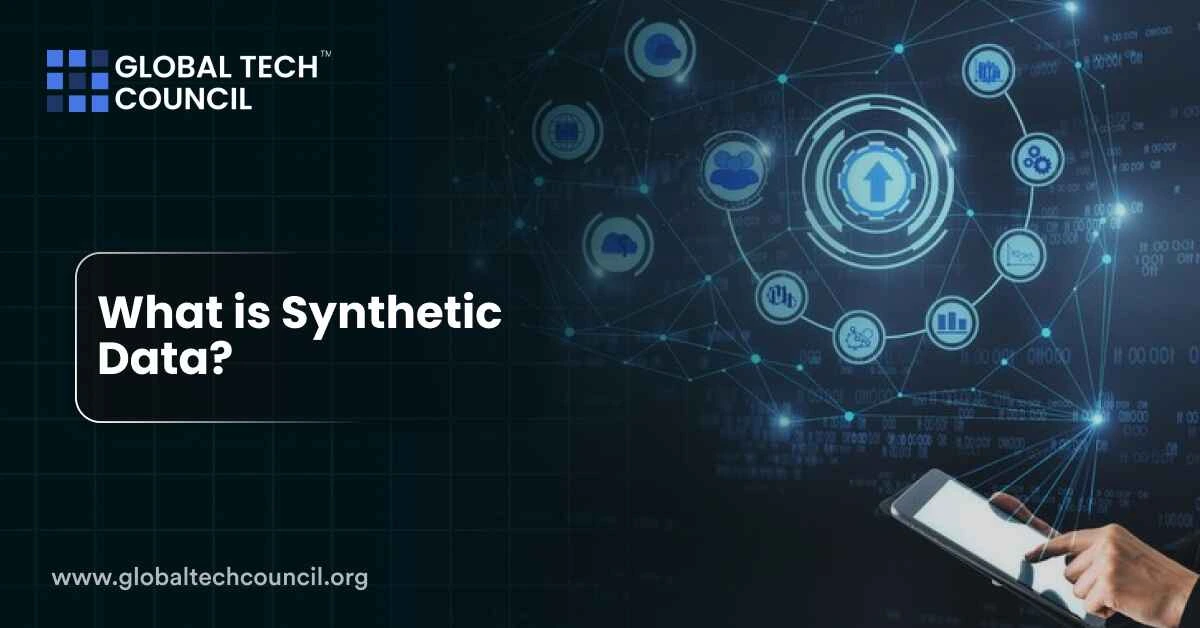
Synthetic data is artificially generated data that mimics real-world data without using any actual personal or sensitive information. It’s created using algorithms or models that learn from real datasets and then produce new, similar examples. The key advantage is that synthetic data maintains the statistical structure of real data while avoiding privacy or legal concerns.
In simple terms, if real data is hard to get, risky to share, or expensive to label, synthetic data can fill the gap. It’s widely used in AI, software testing, and research where access to quality data is limited.
Why Synthetic Data Matters
Synthetic data solves real-world problems that traditional data can’t handle easily. Here’s why it’s becoming essential:
- It protects privacy: Since the data isn’t tied to real people, it’s safe to use.
- It’s flexible: You can generate as much as you need.
- It’s cost-effective: No need to collect or annotate massive real datasets.
- It’s easy to share: No legal or compliance hurdles in most cases.
For example, if a healthcare company wants to test a model but can’t share patient records, they can use synthetic data that behaves like the original.
How Synthetic Data Is Created
There are several ways to generate synthetic data:
Rule-Based or Simulation Methods
These use predefined rules or physics-based simulations to mimic real-world processes. Common in engineering or robotics.
Statistical and ML-Based Models
These methods use real data to learn distributions and then sample new data points. Gaussian mixtures and probabilistic modeling are popular here.
Generative AI (GANs, VAEs, LLMs)
GANs and Variational Autoencoders create realistic data by learning from real examples. They are often used for images, speech, and now even structured data. Large Language Models (LLMs) can generate high-quality synthetic text, documents, and even conversations.
Data Augmentation
This takes existing data and creates modified versions by adding noise, changing formats, or rotating images. It’s simpler but still useful in computer vision and NLP.
Synthetic Data Generation Methods
| Method | How It Works | Best Used For | Key Advantage |
| Rule-Based Simulation | Uses logic or rules to simulate reality | Robotics, physics problems | Transparent, controllable |
| Statistical Models | Learns patterns from real data | Tabular or time-series data | Mathematically grounded |
| Generative AI (GANs) | Learns and mimics distributions | Images, text, conversations | High realism |
| Data Augmentation | Alters real examples | Vision, speech, NLP tasks | Simple and fast to apply |
Where Synthetic Data Is Used
The applications keep growing as the technology improves:
- Software testing: To test edge cases without real inputs
- Healthcare: For rare disease modeling or diagnostics
- Fraud detection: To simulate unusual patterns
- Autonomous vehicles: For safe simulation environments
- AI training: When real data is scarce, sensitive, or expensive
What to Watch Out For
While synthetic data has many advantages, it’s not perfect.
- It may lack realism: If the model isn’t well trained, it can miss rare or subtle patterns.
- It depends on the input: Bad real data leads to bad synthetic data.
- It can cause model collapse: Training models on only synthetic data can lead to poor performance in the real world.
Trends in 2025: Where Synthetic Data Is Headed
The field is growing fast, especially with more AI-driven tools. Here are some key trends:
Enterprise Adoption
Big tech companies like Nvidia, Meta, and Google are building platforms where synthetic data powers AI models at scale.
Privacy-First Development
Frameworks using differential privacy are being adopted to make synthetic data both private and useful.
Regulatory Use
Governments and regulators are considering synthetic data for health research, public data sharing, and compliance testing.
LLM-Based Data Creation
Large language models are now being used to generate high-quality structured and unstructured synthetic datasets, improving realism and speed.
If you’re interested in learning how to build or use synthetic datasets for enterprise AI, explore the deep tech certification.
Benefits and Risks of Using Synthetic Data
| Benefit | Description | Risk | Caution Point |
| Privacy-Safe | No real user data is exposed | May oversimplify edge cases | Monitor performance on real data |
| Scalable | Easy to generate large datasets | Can include bias | Quality depends on source model |
| Cost-Efficient | No need for manual collection or labeling | Can lack realism | Needs validation |
| Shareable | Legal-friendly for collaboration | Limited generalization | Always test on real samples |
When Should You Use Synthetic Data?
- When you can’t get real data due to privacy or access issues
- When the event you’re modeling is rare (like fraud or disease)
- When testing software at scale
- When training AI systems that need lots of examples
If you want to build hands-on expertise, the Data Science Certification walks through real and synthetic workflows step by step.
And for business leaders or marketing professionals working with data, the Marketing and Business Certification explains how synthetic data is changing research and product testing.
Conclusion
Synthetic data is no longer a side tool. It’s now a core part of modern AI, testing, and analytics. By creating high-quality data that mimics the real world, teams can train models faster, safer, and at lower cost.
With tools like GANs, LLMs, and privacy-aware frameworks, synthetic data is more powerful than ever. Just remember: it’s a complement, not a complete replacement for real data. Use it wisely, and it will unlock faster and safer development.